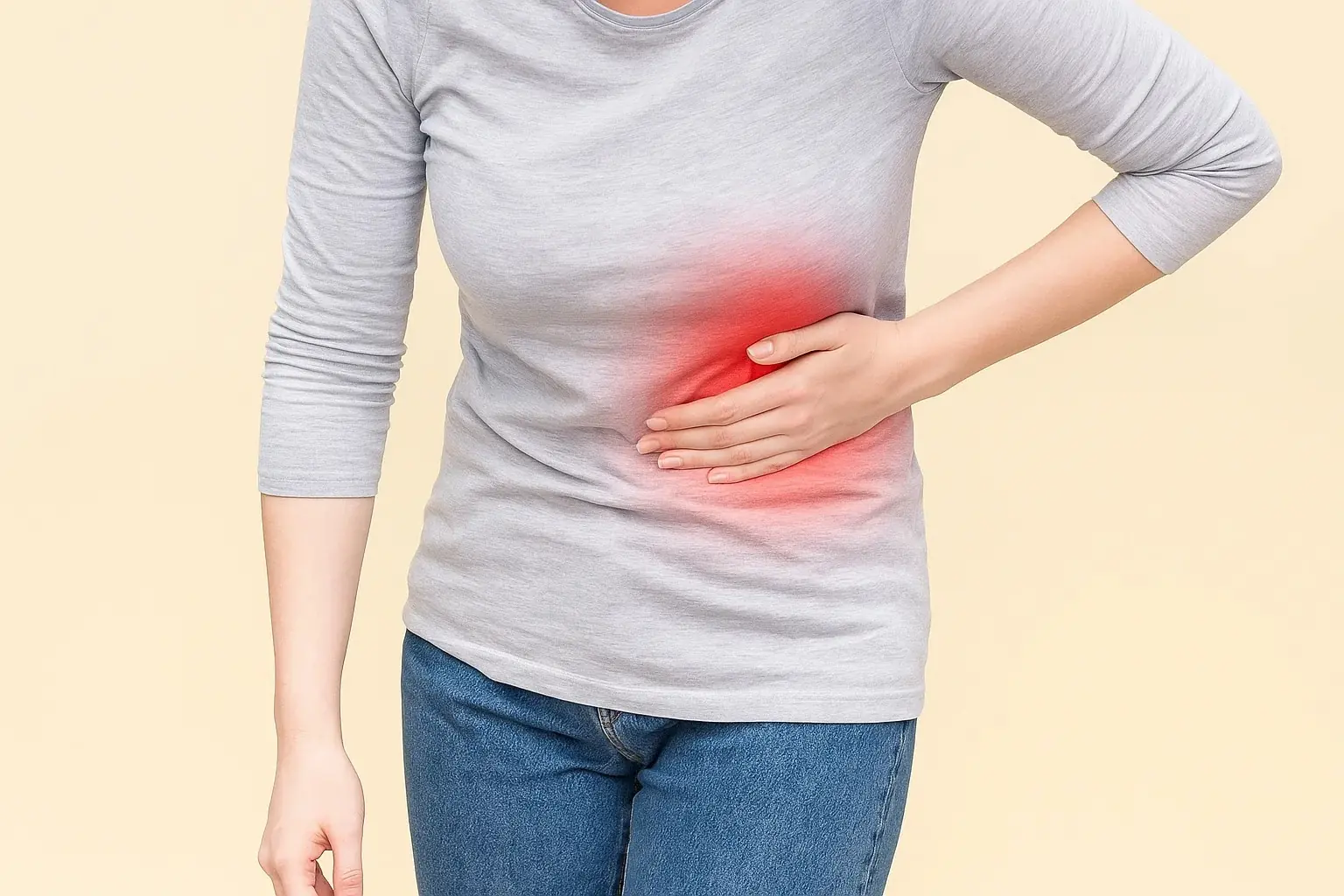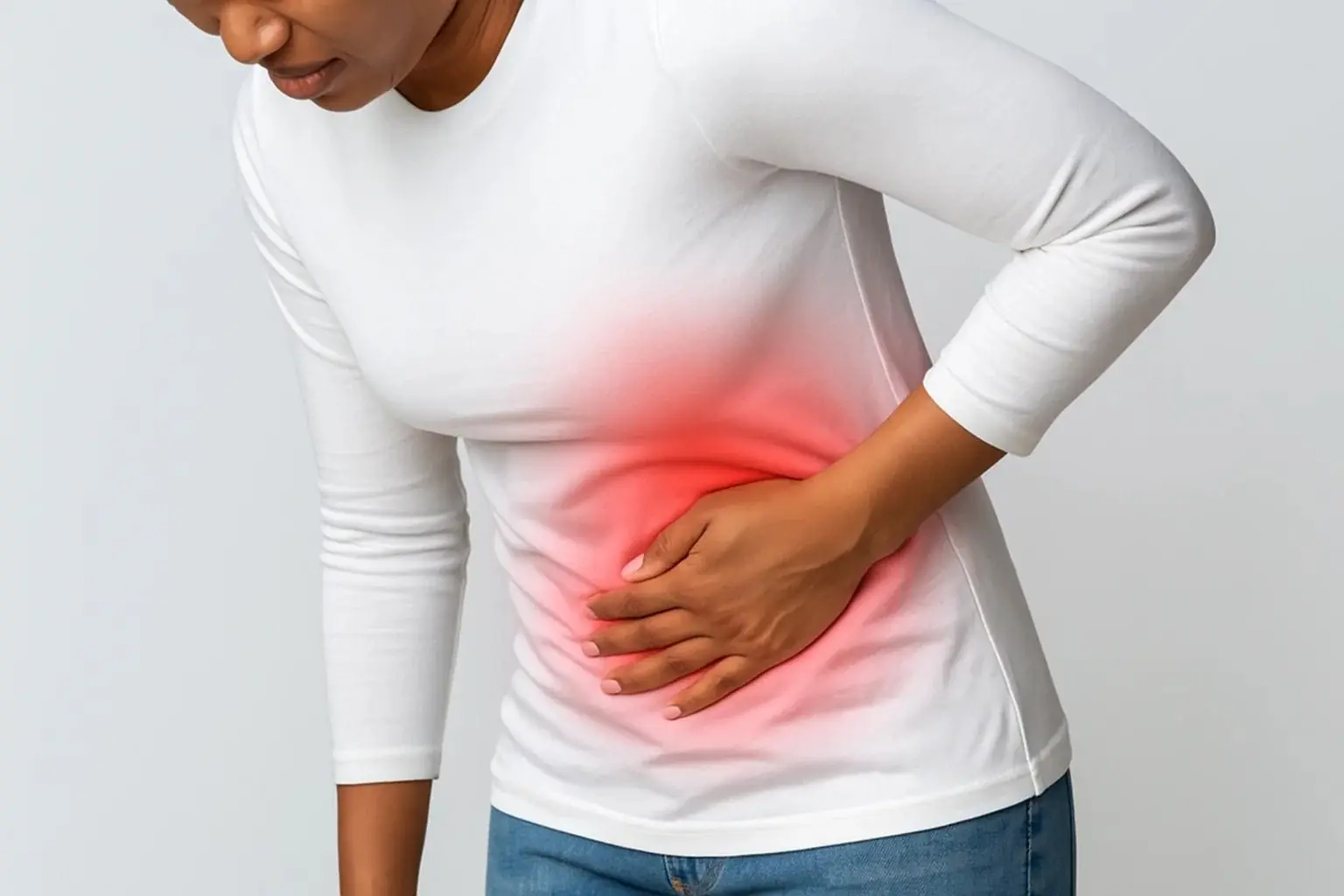
Pain ON The Left Side Of The Body: What it could mean?
We’ve all felt it — that sudden cramp, dull ache, or sharp sting in the belly that makes us pause. While abdominal pain is often harmless and resolves on its own, it can also serve as your body’s alarm system, warning you of something more serious happening beneath the surface.
Understanding what different types of abdominal pain mean, and knowing when it’s time to seek medical attention, can make a world of difference for your health. Let’s break it down.

What Is Abdominal Pain?
Abdominal pain refers to any kind of discomfort between your chest and pelvis. It may feel sharp, stabbing, dull, crampy, or come in unpredictable waves. Most of the time, it’s linked to everyday issues such as indigestion, constipation, gas, or even overeating. However, persistent or localized pain can sometimes point to underlying medical conditions that should not be ignored.
Pain on the Left Side of the Abdomen
Lower Left Side
The most common culprit here is diverticulitis — inflammation of small pouches (diverticula) that form in your colon, particularly as you age. Another frequent cause is Irritable Bowel Syndrome (IBS), a long-term condition that brings recurring abdominal discomfort, bloating, and changes in bowel habits. In some cases, lower left abdominal pain can also result from constipation, hernias, or urinary tract infections.
Upper Left Side
Pain in this region could stem from several digestive or organ-related problems, such as:
- Pancreatitis (inflammation of the pancreas)
- Gastritis or stomach ulcers
- Stomach or bile reflux
- Enlarged spleen (splenomegaly)
- Stomach cancer (less common but serious)
- Kidney stones or infections
Interestingly, discomfort in the upper left abdomen doesn’t always originate from the stomach itself. It may actually mimic chest-related problems, such as:
- Heartburn or acid reflux
- Angina or even a heart attack
- Pericarditis (inflammation around the heart)
- Pneumonia or pleurisy
- Pulmonary embolism (a dangerous blood clot in the lungs)
Pain on the Right Side of the Abdomen
Lower Right Side
This area is most commonly associated with appendicitis, which is a medical emergency requiring prompt surgery. If you notice sharp pain here that worsens over time, it’s important to seek urgent care.
Upper Right Side
This part of the abdomen houses key organs such as the liver and gallbladder. Pain may be linked to:
- Hepatitis (viral, autoimmune, or toxin-related)
- Gallstones or gallbladder inflammation (cholecystitis)
- Liver disease or liver cancer
- Gallbladder cancer (rare but possible)
- Kidney stones or infection
- Duodenal ulcers
- Bowel obstruction
Because so many vital organs are located here, upper right abdominal pain should never be brushed off casually.
When to Seek Medical Help
Not all abdominal pain is an emergency, but knowing the warning signs can help protect you from serious complications.
👉 Call your doctor if you experience:
- Severe or persistent pain that doesn’t improve
- A tender belly when touched
- Pain lasting more than a few hours
- Vomiting for more than 48 hours
- Signs of dehydration (dark urine, extreme thirst, infrequent urination)
- Painful or frequent urination
- No bowel movement, especially when paired with vomiting
👉 Call 911 or seek emergency help immediately if you:
- Experience chest pain or shortness of breath
- Recently had abdominal trauma or injury
- Vomit blood or notice bloody/black stools
- Are pregnant and experiencing abdominal pain
- Have unexplained swelling in your abdomen
- Notice yellowing of your skin or eyes (jaundice)
- Are losing weight unexpectedly and rapidly
Final Thoughts
Abdominal pain is one of the body’s most common warning signs. Sometimes it’s just a signal that you’ve eaten too much or too quickly, but at other times, it may be a clue that something far more serious is happening inside. Paying attention to where the pain occurs, how long it lasts, and whether it comes with other symptoms is crucial. When in doubt, listen to your body and don’t hesitate to seek professional medical advice.
News in the same category


Male contraceptive pill appears to be safe without side effects in early trials

The Volume Buttons on Your iPhone Have Countless Hidden Features

4 Things You Should Never Say At A Funeral — No Matter What

Mass Panic as ‘New Baba Vanga’ Predicts Majo Disasters Striking in Just One Month

8 Early Warning Signs Of Ovarian Cancer You Shouldn’t Ignore

5 foods you should never keep overnight

3 Ways to Prevent Snakes from Entering Your House: Protect Your Family

When a Washing Machine Shows 7kg, 8kg, or 10kg, Is That the Weight of Dry or Wet Clothes?

Don’t wear these two types of slippers on the plane—they can compromise your safety

On Humid Days, Walls Are Prone to Mold and Peeling

You Don’t Need to Mop the Floor All Week, But It Will Still Be Spotless Thanks to These 4 Amazing Tips That Very Few People Know

Do you need to unplug the rice cooker after the rice is cooked?

Effective and simple ways to restore a non-stick pan without needing to replace it

Defrosting Shrimp by Soaking in Water Is a Mistake

Effective tips to kill cockroaches and keep your house clean

Sprinkle a little salt into the door cracks, you will see something special after 5 minutes

If You Keep Waking Up at 3AM, The Universe Might Be Trying to Tell You Something

No Matter How Rich You Are, Never Buy These 4 Things Online
News Post

Your AC habits might be soaring your bl00d sugar!

Hidden St0mach Canc3r Risk

Understanding Womb C@ncer: Symptoms, Survival Rates, and Importance of Early Detection

Top 3 Seeds and 3 Drinks to Reduce Bloating, According to a Renowned Gastroenterologist

This One Superfood Could Tackle Major Health Issues—Here’s What You Need To Know

Male contraceptive pill appears to be safe without side effects in early trials

The Volume Buttons on Your iPhone Have Countless Hidden Features

4 Things You Should Never Say At A Funeral — No Matter What

Mass Panic as ‘New Baba Vanga’ Predicts Majo Disasters Striking in Just One Month

8 Early Warning Signs Of Ovarian Cancer You Shouldn’t Ignore

5 foods you should never keep overnight

3 Ways to Prevent Snakes from Entering Your House: Protect Your Family

When a Washing Machine Shows 7kg, 8kg, or 10kg, Is That the Weight of Dry or Wet Clothes?

Don’t wear these two types of slippers on the plane—they can compromise your safety

On Humid Days, Walls Are Prone to Mold and Peeling

You Don’t Need to Mop the Floor All Week, But It Will Still Be Spotless Thanks to These 4 Amazing Tips That Very Few People Know

Do you need to unplug the rice cooker after the rice is cooked?

Effective and simple ways to restore a non-stick pan without needing to replace it
